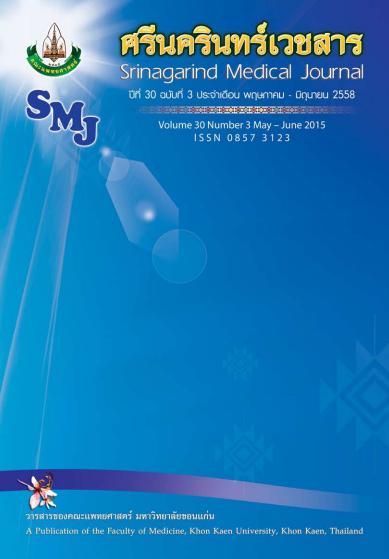Effectiveness of Clinical Practice Guideline for the Prevention of Postoperative Nausea and Vomiting (PONV) in Srinagarind Hospital.
Keywords:
Effectiveness, Clinical Practice Guideline for Prevention Postoperative Nausea and VomitingAbstract
Background and objective: Postoperative nausea and vomiting (PONV) is the most common complication that occurs within the first 24 hours after anesthesia. This problem can lead to morbidity affects patients in the length of hospital stay, which could reduce customer satisfaction. The aim of this study was to assess the effectiveness of clinical practice guidelines for the prevention of PONV in high-risk groups.
Methods: This was a retrospective descriptive study, the data were collected from post anesthesia records of Srinagarind hospital. The approach adopted for the prevention of postoperative nausea and vomiting in patients at high risk groups. The data were collected from May to July 2011.The incidence of PONV to record the gender, age, American Society of Anesthesiology (ASA) classification, type of surgery, phase of an incident, the severity of PONV and whether the guideline was followed. The data was analyzed and monitoring problems encountered in real applications.
Results: All 3,329 patients underwent general anesthesia, the high risk group were 482 patients (14.5%). Eighty nine (95 %CI 85.2 – 92.8) of the study group compared with 77.4% (95%CI 71.8 – 83.0) of the controlled group was no incidence of PONV with statistic significance (p-value 0.002). There was no severe PONV in the study group, when compared with controlled group (1.8%).
Conclusion: This study showed that dexamethasone and ondansetron are effective drugs for the prevention of PONV in high risk groups within 24 hours periods.




